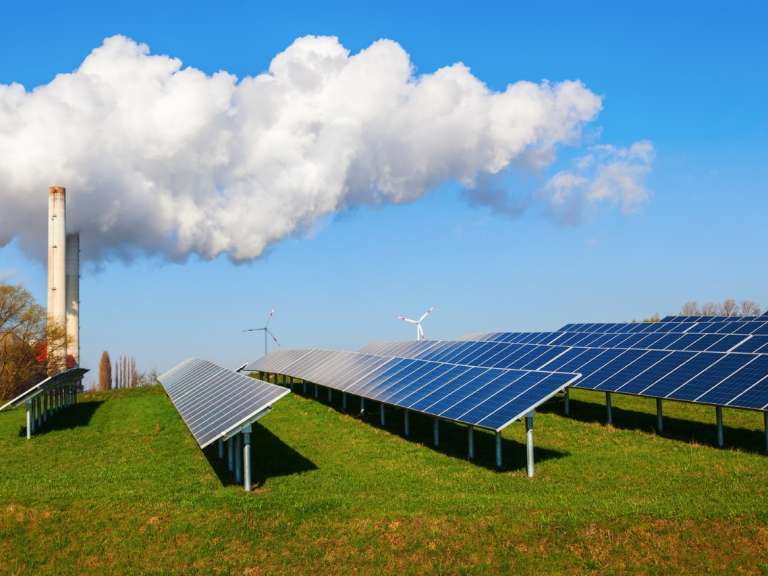Fuel Mix Trends for 2018: Examining Outlooks for Coal, Gas, and Renewables
Heidi VellaWhat will fuel energy generation in the new year? Here's an expert look.

The election of a new administration in 2016 signaled a major shift in US energy policy, and the power sector is already witnessing significant changes. In just over 250 days under a new government, the US exited the Paris climate accord, repealed — pending legal approval — the Clean Power Plan, and lifted many environmental restrictions on coal, leading to the question: What can power plant managers in the US expect for the fuel mix in 2018?
According to the EIA Short-term Energy Outlook, published in September, after declining 1.7 percent in 2016, energy-related carbon dioxide emissions are projected to decrease by 0.5 percent in 2017, and then to increase by 2.6 percent in 2018—meaning decarbonization of the energy sector is stalling.
Unlike the UK, France, and China, the US has made no commitment to phase out diesel-powered cars—a move that would encourage adoption of electric vehicles and increase demand from the power generation sector.
However, despite the government's attempts to reverse many clean power commitments, the growth of renewable energy generation in the US has, for the most part, remained strong.
This is largely because investment in renewable energy is now primarily driven by technological progress, market forces, and the undeniable price competitiveness of wind and solar, notes Zacks Industry Outlook. Both have also been boosted by an extension of the environmental tax credit that came as part of the $1.15 trillion federal spending bill. Notably, this credit will be phased out over the next four years.
Still, growth in renewables is a global trend that's unlikely to change. The EIA International Energy Outlook states that renewable energy will be the fastest-growing power source globally through 2040.
The EIA predicts wind capacity will expand to a total of 88 GW by the end of 2017 and to 96 GW by the end of 2018. Yet the industry itself expects much more rapid expansion next year. Bloomberg New Energy Finance predicts that US offshore wind will have a total installed capacity of 3 to 4 GW by 2030, says Wind Power Engineering & Development; but New Energy Update claims that growth expectations for the sector are twice that.
The EIA expects total utility-scale solar capacity to be around 29 GW by the end of 2017 and to increase modestly to 33 GW by the end of 2018.
The Solar Energy Industries Association (SEIA) paints a slightly less rosy picture of installation of solar in the US, which had a bumper year in 2016, but fell by 2 percent in the first quarter of 2017. Heading into 2018, uncertainty looms over its long-term outlook, particularity due to a new trade dispute initiated by the domestic module and cell manufacturer Suniva that analysts say could upend the market.
China and India have also surpassed the US at the top of the latest EY renewable energy country attractiveness index (RECAI)—the country's first fall in ranking since 2015.
Renewables have proved disruptive to traditional power generators, but fossil fuels still remain the dominant power producers in the US, accounting for 33 percent (natural gas), 28 percent (petroleum) and 17 percent (coal) of energy production in 2016, according to the EIA.
Nevertheless, technological progress and market forces will likely dictate that renewable-energy market share will grow, aided by continuing advancements in battery technology. This puts flexibility from power plants at a premium. Many utilities, such as in California and Washington, are already working to manage the imbalance in the grid created by renewables. As renewables continue to drop in price, power plant managers will face increasing cost-competitive pressures that can in part be offset by increased efficiency.
Despite growth in previous years, distributed solar energy is predicted to decline in 2018. GMT Research forecasts that residential photovoltaic (PV) solar will experience its first down year ever in the US, potentially worsened by the Suniva case.
This decline could continue in 2018 when many states review their solar energy policies. Hawaii, Nevada, Arizona, Maine, and Indiana have actually phased out net metering, which has crippled some programs that formerly spurred growth in the rooftop solar market.
Traditional power plant operators shouldn't underestimate the threat from decentralized energy, however. In the US and globally, it will remain one of the biggest issues facing the energy industry going forward.
One of the new administration's flagship policies is to revive the US coal industry. The EIA expects coal-powered energy production to increase by 2 percent in 2018 – however, that is compared to 8 percent in 2017. The agency projects that generation shares for natural gas and coal in 2018 will average 31 and 32 percent, respectively.
Overall, the US fuel mix for 2018 is continuing along a decarbonization path, albeit more slowly, with renewables and decentralized energy continuing to remain competitive against traditional and centralized power generation. Steam power generators have been buoyed by recent policy shifts, but will need to remain flexible, efficient, and aware of change to best serve the grid, while also remaining cost competitive.
Will the responsibility of intermittent energy source balancing fall primarily on batteries and energy storage, or can digitized thermal power plants take on some of the task?
The future holds the promise of smart cities and power plants that utilize interconnected, decentralized networks to provide more efficient and sustainable public services.
The EIA estimated that coal will overtake natural gas in power production this winter. Are these simply seasonal power generation trends?